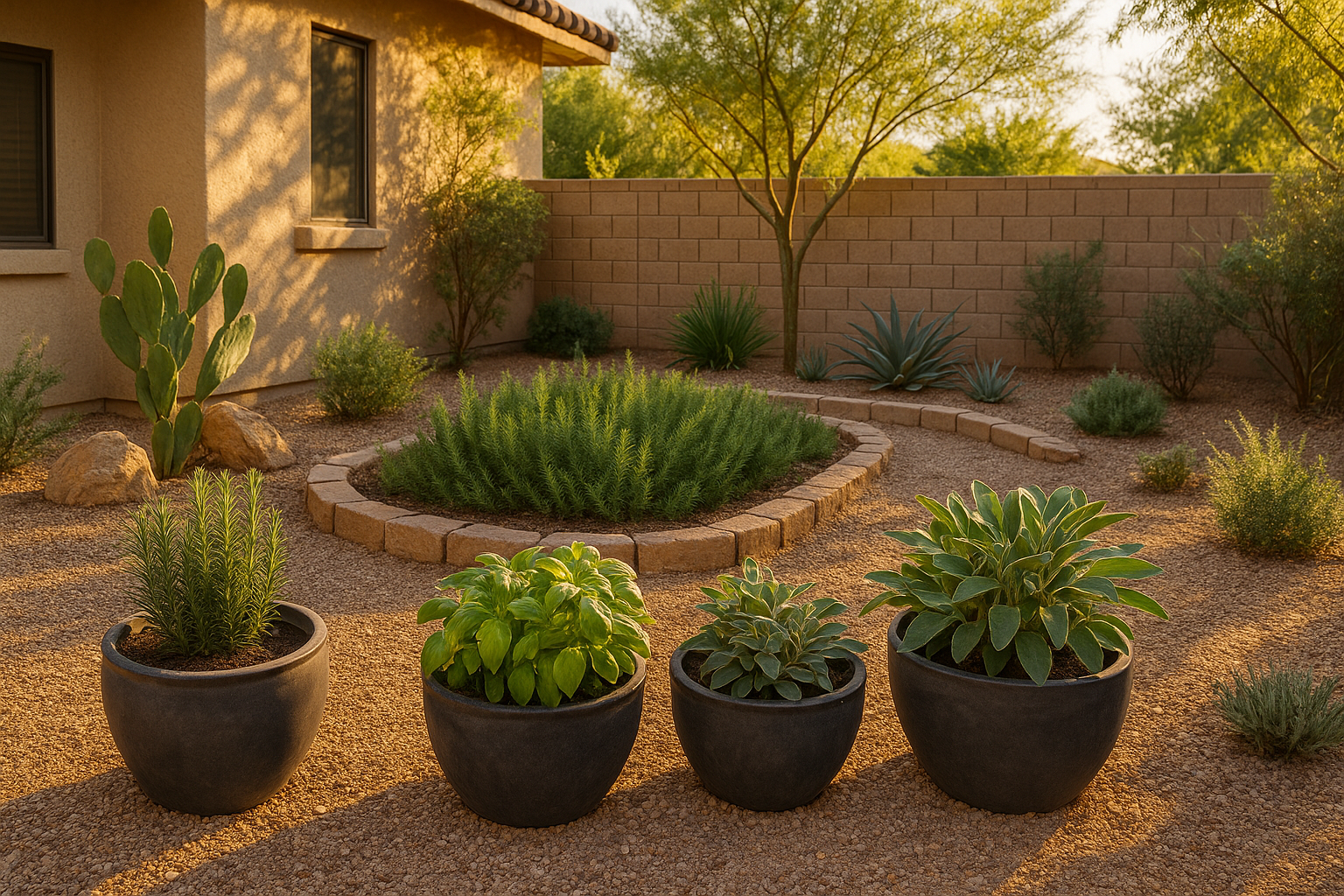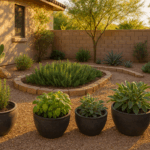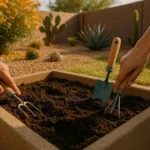Living in Gilbert, Arizona, you’re no stranger to the extreme heat. Even in the most scorching temperatures, it’s possible to cultivate a thriving herb garden. With a scientific and eco-conscious approach, you can beat the heat and enjoy fresh, homegrown herbs all year round. This article will provide you with valuable tips and strategies for growing herbs in extreme heat.
Understanding the Gilbert Climate
Gilbert, located in the Southeast Valley, experiences a hot desert climate with mild winters and extremely hot summers. The average high temperature in summer can reach up to 106°F (41°C), making it challenging for many plants to survive, let alone thrive. However, don’t feel disheartened! With a proper understanding of the local climate and some strategic gardening techniques, you can create a flourishing herb garden despite the heat.
It’s crucial to understand that not all herbs are created equal. Some herbs are more heat-tolerant than others, making them the perfect candidates for your Gilbert garden. Basil, rosemary, thyme, and oregano are some examples of heat-loving herbs that can withstand Gilbert’s extreme summer temperatures. On the other hand, herbs such as parsley and cilantro prefer cooler temperatures and might struggle in the heat.
Choosing the Right Herbs for Your Garden
As mentioned, certain herbs are more heat-tolerant than others. Let’s dive a little deeper into these heat-loving herbs and why they’re a great fit for your Gilbert garden.
Basil: This flavorful herb thrives in warm temperatures and full sun. It’s a fast-growing annual that can be harvested throughout the summer. There are many varieties of basil, including sweet basil, Thai basil, and purple basil, that you can experiment with in your garden.
Rosemary: A perennial herb, rosemary, can withstand the Gilbert heat due to its Mediterranean origins. It grows well in full sun and well-drained soil and can be harvested year-round.
Thyme: Another Mediterranean native, thyme, prefers sunny, hot conditions. It’s a perennial herb that’s drought-tolerant, making it a great choice for your Gilbert garden.
Oregano: Oregano is a robust herb that can tolerate hot, dry conditions. It’s a perennial that grows well in full sun and well-drained soil. Like rosemary and thyme, oregano can be harvested year-round.
Creating Optimal Growing Conditions

While choosing heat-tolerant herbs is a crucial first step, it’s equally important to create optimal growing conditions for your garden. Here are some tips to help you get started:
Watering: Water your herbs early in the morning to minimize evaporation. Deep watering encourages deep root growth, which helps plants withstand hot and dry conditions. However, avoid overwatering as it can lead to root rot. It’s also a good idea to mulch around your plants to reduce water evaporation from the soil.
Soil: Good drainage is key to preventing waterlogged roots. Amend your soil with organic matter to improve its structure and water-holding capacity. This is a sustainable way to enrich your soil and support plant growth.
Shade: While many herbs love the sun, extreme heat can be damaging. Consider providing afternoon shade to protect your plants from the harshest sunrays. You can use shade cloth, patio umbrellas, or even other taller plants to provide some relief from the sun.
Protecting Your Herbs from Extreme Heat
Even heat-tolerant herbs can benefit from some protection during the hottest part of the day. Here are some strategies to help your herbs survive the Gilbert heat:
Shade Cloth: A shade cloth can protect your plants from intense sun and heat. Choose a cloth that blocks 30-50% of the sunlight for best results. The cloth can be erected on poles over your garden during the hottest months and then removed when the temperature cools down.
Mulching: Mulching not only preserves soil moisture but also keeps the soil temperature down. Organic mulch like straw or wood chips can be very effective. Remember to leave some space around the plant stems to prevent rot.
Proper Spacing: Giving your herbs enough space to grow ensures good air circulation, which can help keep them cool. Overcrowding can lead to humidity buildup around your plants, which can make them more susceptible to diseases.
Comparing Herbs: A Graphical Examination
To further help you understand the suitability of different herbs for Gilbert’s extreme heat, let’s take a graphical comparison approach. Imagine a bar graph, where the x-axis represents different herb varieties and the y-axis represents their heat tolerance level. Basil, rosemary, thyme, and oregano would all fall on the higher end of the y-axis, indicating their high heat tolerance. On the other end, herbs like parsley and cilantro would fall lower on the y-axis, indicating their lower tolerance to extreme heat. This visual comparison clearly highlights the differences between heat-tolerant and heat-sensitive herbs, guiding you towards making the best choices for your Gilbert garden.
Conclusion
Growing herbs in Gilbert’s extreme heat may seem daunting, but with the right knowledge and techniques, it’s certainly achievable. By understanding the local climate, choosing appropriate herbs, creating optimal growing conditions, and providing adequate protection, you can cultivate a successful herb garden even in the most challenging temperatures. Remember, gardening is a journey of learning and experimentation. Don’t be discouraged by a few setbacks. Instead, view them as opportunities to adapt and grow, just like your garden plants.






